Introduction to Static Force
Static force is a fundamental concept in physics that plays a crucial role in keeping objects stationary. It is important to understand the definition of static force and its significance in various applications. In this section, we will explore the concept of static force and its practical implications.
Definition of Static Force
Static force refers to the force exerted on an object that is at rest or in equilibrium. It is the force that counteracts any external forces acting on the object, preventing it from moving. In other words, static force maintains the stability and balance of an object when no other forces are acting upon it.
When an object is at rest, the static force acting on it is equal in magnitude and opposite in direction to the sum of all the external forces acting on it. This balance of forces ensures that the object remains stationary.
Importance of Static Force in Keeping Objects Stationary
Static force is of utmost importance in various aspects of our daily lives. It is responsible for keeping objects in place, preventing them from sliding, toppling over, or moving when subjected to external forces. Here are a few examples that illustrate the significance of static force:
-
Structural Stability: In architecture and civil engineering, static force plays a crucial role in ensuring the stability of structures. Buildings, bridges, and other structures rely on static force to resist the forces of gravity, wind, and other external factors. Without static force, these structures would collapse or become unstable.
-
Friction: Friction is a type of static force that arises when two objects are in contact with each other. It opposes the relative motion between the objects and prevents them from sliding. For example, when you place a book on a table, the static force of friction between the book and the table keeps it from sliding off.
-
Static Electricity: Static force also manifests in the form of static electricity. When two objects with different electrical charges come into contact or are rubbed together, static force is generated. This force can cause objects to stick together or repel each other, depending on the nature of the charges.
-
Weight Distribution: Static force is essential for maintaining the balance and stability of objects with uneven weight distribution. For instance, when you stack books on a shelf, the static force between the books and the shelf keeps them from toppling over.
In conclusion, static force is a fundamental concept that ensures the stability and equilibrium of objects. It is responsible for keeping objects stationary and preventing them from moving when subjected to external forces. Understanding static force is crucial in various fields, including physics, engineering, and everyday life.
Examples of Static Force
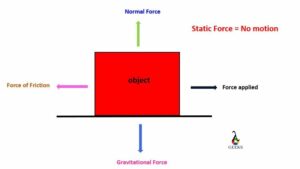
Bicycle resting on a bridge

One example of static force is when a bicycle is resting on a bridge. In this scenario, the force of gravity is acting on the bicycle, pulling it downwards. However, the bridge exerts an equal and opposite force, known as the normal force, which prevents the bicycle from sinking into the bridge. This balance of forces keeps the bicycle in a static position.
Key hung on a keyholder



Another example of static force is when a key is hung on a keyholder. When the key is placed on the keyholder, the force of gravity pulls it downwards. However, the keyholder exerts an upward force, counteracting gravity and keeping the key in place. This static force allows the key to remain suspended without falling to the ground.
Hook attached to a loop ring
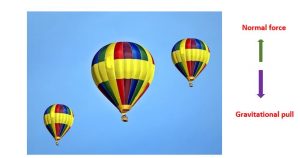

A hook attached to a loop ring is another instance of static force. When a hook is inserted into a loop ring, the force of gravity acts on the hook, trying to pull it downwards. However, the loop ring exerts an equal and opposite force, preventing the hook from falling out. This static force keeps the hook securely attached to the loop ring.
Paint frame on a wall

When a paint frame is hung on a wall, static force comes into play. The force of gravity pulls the paint frame downwards, but the wall exerts an equal and opposite force, known as the normal force, which prevents the frame from falling. This static force allows the paint frame to remain in place, ready for use.
Boat sailing on the surface of water
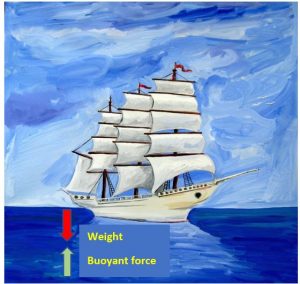
Even though it may seem contradictory, a boat sailing on the surface of water experiences static force. The force of gravity acts on the boat, trying to pull it downwards. However, the buoyant force exerted by the water counteracts gravity, allowing the boat to float. This static force keeps the boat afloat, enabling it to navigate the water.
Body placed at a certain height

When a body is placed at a certain height, static force is at play. The force of gravity pulls the body downwards, but the surface or object supporting the body exerts an equal and opposite force, preventing it from falling. This static force allows the body to remain stationary at a specific height.
An individual who stands on the ground
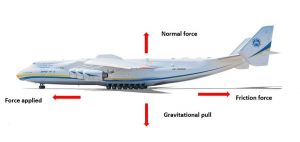
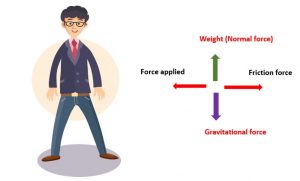
When an individual stands on the ground, static force is present. The force of gravity pulls the person downwards, but the ground exerts an equal and opposite force, known as the normal force, which prevents the person from sinking into the ground. This static force keeps the individual standing upright.
Pushing a brick wall
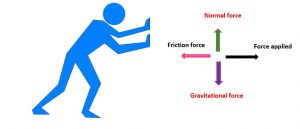
Pushing a brick wall is an example of static force. When a person pushes against a brick wall, they exert a force on the wall. However, due to the wall’s immobility, it exerts an equal and opposite force, preventing any movement. This static force allows the wall to remain in place despite the applied force.
In conclusion, static force is present in various everyday scenarios. Whether it’s a bicycle resting on a bridge, a key hung on a keyholder, or a boat sailing on water, static force plays a crucial role in maintaining stability and preventing movement. Understanding static force helps us comprehend the equilibrium of forces in different situations.
When you carry a load overhead


Carrying a load overhead can be a challenging task that requires strength, balance, and proper technique. Whether you’re lifting a heavy object, performing an exercise, or participating in a sport, understanding the concept of static force is essential to ensure your safety and maximize your performance.
Strings attached to the bow
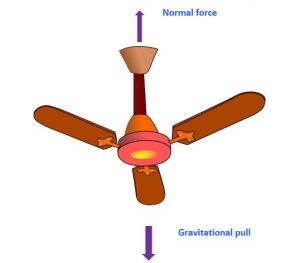

One example that can help illustrate the concept of static force is imagining yourself as an archer, with a bow and arrow in hand. As you draw the bowstring back, you create tension in the string. This tension is a result of the static force being applied to the string.
The static force in this scenario is the force exerted by the bow limbs, which are bent when the string is pulled back. The tension in the string is equal and opposite to the static force applied by the bow limbs. This static force allows you to hold the bowstring in a steady position, ready to release the arrow.
To better understand the concept, let’s break it down into three key components:
-
Bow limbs: These are the flexible parts of the bow that store potential energy when bent. The limbs are made of materials such as wood, fiberglass, or carbon fiber, which have the ability to flex and return to their original shape.
-
Bowstring: The string is attached to both ends of the bow limbs and is responsible for transferring the stored potential energy to the arrow. When the string is pulled back, it creates tension, which is the static force we’re focusing on.
-
Static force: The static force is the force exerted by the bow limbs when they are bent. This force is transferred to the bowstring, creating tension. It is this tension that allows you to hold the bowstring in place, ready to release the arrow.
By understanding the concept of static force in this example, you can appreciate the importance of balance and technique when carrying a load overhead. Just like the tension in the bowstring, you need to find the right balance between exerting force and maintaining stability to prevent the load from falling or causing injury.
In addition to archery, the concept of static force is applicable in various other scenarios. For instance, when performing exercises such as overhead presses or carrying heavy objects overhead, you need to be aware of the static force involved. Proper form and technique are crucial to ensure that the static force is distributed evenly and that you maintain control over the load.
In conclusion, understanding the concept of static force is essential when carrying a load overhead. By visualizing the example of strings attached to a bow, you can grasp the idea of tension and how it relates to static force. Remember to prioritize balance, technique, and safety to optimize your performance and prevent any potential injuries.
Characteristics of Static Force
Static force as a contact force

Static force is a fundamental concept in physics that plays a crucial role in our everyday lives. It is a type of force that acts on an object when it is at rest, exerting pressure or tension on the object without causing it to move. Let’s explore some of the key characteristics of static force.
1. Magnitude: The magnitude of static force is determined by the amount of pressure or tension applied to an object. It can range from a gentle push to a strong pull, depending on the circumstances.
2. Direction: Static force can act in any direction, depending on the nature of the contact between the objects involved. It can be horizontal, vertical, or at any angle, influencing the object’s stability and equilibrium.
3. Contact force: Static force is a type of contact force, meaning it requires direct physical contact between objects for it to be exerted. For example, when you push a book on a table, the force you apply to the book is a static force.
4. Balanced forces: In some cases, static forces can be balanced, meaning the forces acting on an object are equal and opposite, resulting in a state of equilibrium. This balance prevents the object from moving or changing its position.
5. Unbalanced forces: On the other hand, if the static forces acting on an object are unbalanced, meaning they are not equal and opposite, the object will experience a net force and may start to move or change its position.
Self-adjusting nature of static force
One interesting characteristic of static force is its self-adjusting nature. When an object is subjected to a static force, it tends to adjust itself to achieve a state of equilibrium. Here are a few examples of how this self-adjustment occurs:
1. Friction: Friction is a type of static force that opposes the motion of an object. When an object is placed on a surface, the static friction force adjusts itself to match the applied force, preventing the object from sliding or moving.
2. Tension: When a string or cable is under static tension, it adjusts itself to balance the forces acting on it. For instance, when you pull a rope from both ends, the tension force within the rope increases to counteract the applied force.
3. Compression: Static force can also manifest as compression, where an object is squeezed or pressed together. In this case, the object adjusts its shape and structure to evenly distribute the applied force, maintaining its stability.
4. Structural stability: Static force is crucial for maintaining the stability of structures such as buildings, bridges, and towers. The forces acting on these structures must be carefully balanced to ensure they can withstand external pressures and remain static.
In conclusion, static force is a contact force that acts on objects at rest, exerting pressure or tension without causing them to move. It possesses unique characteristics such as magnitude, direction, self-adjustment, and the ability to maintain equilibrium. Understanding these characteristics helps us comprehend the behavior of objects under static forces and their impact on our physical surroundings.
Difference Between Static and Dynamic Forces
Definition of Dynamic Force
Dynamic force refers to a type of force that is constantly changing or in motion. Unlike static force, which remains constant and stationary, dynamic force involves movement and variation. In physics, dynamic force is often associated with objects that are in motion or experiencing acceleration. It can be caused by factors such as gravity, friction, or applied forces.
Comparison of Static and Dynamic Forces
Static and dynamic forces are two fundamental concepts in physics that help us understand the behavior of objects. Let’s take a closer look at the key differences between these two types of forces:
- Nature of Forces
Static forces are characterized by their stationary nature. They do not cause any motion or change in an object’s position. Examples of static forces include the force exerted by a book resting on a table or the tension in a rope holding a hanging object in place.
On the other hand, dynamic forces are associated with motion and change. They can cause objects to accelerate, decelerate, or change direction. Examples of dynamic forces include the force exerted by a person pushing a car or the gravitational force acting on a falling object.
- Magnitude and Direction
Static forces have a fixed magnitude and direction. They remain constant as long as the conditions remain unchanged. For instance, the weight of an object on Earth is a static force that depends on the mass of the object and the acceleration due to gravity.
In contrast, dynamic forces can vary in magnitude and direction. They depend on factors such as the applied force, the mass of the object, and the presence of other forces. For example, when a car accelerates, the dynamic force exerted by the engine increases, causing the car to gain speed.
- Effect on Objects
Static forces do not cause any change in an object’s motion. They simply balance out other forces acting on the object, resulting in a state of equilibrium. This means that the net force acting on the object is zero, and it remains at rest or moves with a constant velocity.
Dynamic forces, on the other hand, can cause objects to accelerate or decelerate. They can change the object’s velocity, direction, or both. For instance, when a ball is kicked, the dynamic force applied to it causes it to accelerate and change its position.
- Applications
Static forces find applications in various fields, including engineering, architecture, and everyday life. Engineers use static force analysis to design structures that can withstand the forces acting on them. For example, when designing a bridge, engineers consider the static forces exerted by the weight of the bridge, the traffic load, and environmental factors.
Dynamic forces are crucial in understanding the motion of objects and designing systems that involve movement. They are used in fields such as mechanics, robotics, and aerospace engineering. For instance, aerospace engineers consider dynamic forces like air resistance and thrust when designing aircraft.
Understanding the difference between static and dynamic forces is essential for comprehending the behavior of objects and systems in various scenarios. Whether it’s analyzing the stability of a structure or predicting the motion of a projectile, these concepts play a vital role in the field of physics. By studying the characteristics and effects of static and dynamic forces, scientists and engineers can develop innovative solutions and improve our understanding of the physical world.
Electrostatic Force Examples
Definition of Electrostatic Force
Electrostatic force is a fundamental concept in physics that describes the force between electrically charged objects at rest. It is a type of static force that arises due to the interaction between charged particles. The force can either be attractive or repulsive, depending on the charges involved.
When two objects have the same type of charge, such as two positively charged objects or two negatively charged objects, they repel each other. On the other hand, when two objects have opposite charges, such as a positively charged object and a negatively charged object, they attract each other.
Examples of Electrostatic Force
Electrostatic force can be observed in various everyday situations. Let’s explore some examples to better understand this concept:
-
Static Cling: Have you ever noticed how a balloon sticks to a wall after rubbing it against your hair? This phenomenon occurs due to the electrostatic force. When you rub the balloon against your hair, it becomes negatively charged. The negatively charged balloon then attracts the positively charged wall, causing it to stick.
-
Lightning: Lightning is another example of electrostatic force in action. During a thunderstorm, the buildup of static charge in the clouds creates a potential difference between the ground and the clouds. When the difference becomes large enough, a discharge occurs, resulting in a lightning bolt. This discharge is the result of the electrostatic force between the charged particles.
-
Van de Graaff Generator: The Van de Graaff generator is a device that demonstrates the principles of electrostatic force. It uses a moving belt to accumulate a large amount of static charge on a metal dome. When a person touches the dome, they experience a mild electric shock due to the electrostatic force between their body and the charged dome.
-
Fly on a TV Screen: Have you ever noticed a fly getting attracted to a TV screen? This happens because the TV screen becomes charged when it is turned on. The electrostatic force between the charged screen and the fly causes it to be attracted to the screen.
-
Electrostatic Precipitators: Electrostatic precipitators are used in industries to remove particulate matter from exhaust gases. The particles are given an electric charge and then attracted to oppositely charged plates, where they accumulate and can be easily removed. This process relies on the electrostatic force to separate the particles from the gas stream.
In conclusion, electrostatic force is a fascinating phenomenon that can be observed in various aspects of our daily lives. From static cling to lightning, understanding the concept of electrostatic force helps us comprehend the behavior of charged particles and their interactions.
Conclusion
In conclusion, static force is a fundamental concept in physics that plays a crucial role in our everyday lives. It is the force exerted on an object when it is at rest or in equilibrium. We have explored various examples of static force, including the tension in a rope, the normal force on a table, and the gravitational force between two objects. Understanding static force is essential for engineers, architects, and anyone working with structures or objects in a state of equilibrium. By considering the forces acting on an object and ensuring they are balanced, we can ensure stability and safety in our designs and everyday activities. So, the next time you encounter a situation where objects are at rest, remember that static force is at play, keeping everything in place.
What are some examples of static force and how do they relate to different types of forces?
Static force refers to the force exerted on an object when it is at rest. It is a type of force that acts in a specific direction but does not result in any motion. Some examples of static forces include tension, compression, and friction. These different types of forces play a significant role in determining the stability and equilibrium of objects. For a detailed explanation of the various forces, refer to the article on Different Types of Forces Explained. Understanding these forces helps in analyzing the behavior of objects at rest and how they interact with their surroundings.
Frequently Asked Questions
What is static force?
Static force refers to the force that acts on an object at rest, preventing it from moving. It occurs when the force applied to an object is balanced by an equal and opposite force, resulting in no motion.
What are static and dynamic forces?
Static forces are forces that keep an object at rest, while dynamic forces cause an object to move. Static forces occur when the applied force is balanced, while dynamic forces occur when the applied force is unbalanced.
What are some examples of static force in everyday life?
Examples of static force in everyday life include pushing a stationary car, holding a book on a table, or keeping a door closed. In each case, the applied force is balanced by an equal and opposite force, resulting in no motion.
Can you provide an example of static force?
Sure! An example of static force is when you push a heavy box on the floor, but it doesn’t move because the static friction force between the box and the floor is equal to the force you apply.
What is the formula for static force?
The formula for static force depends on the specific situation. However, in general, static force can be calculated using the equation F_static = μ_s * N, where μ_s is the coefficient of static friction and N is the normal force.
Are there any examples of static friction force?
Certainly! An example of static friction force is when you try to slide a heavy object on a rough surface. The static friction force opposes the applied force and prevents the object from moving until the force is sufficient to overcome it.
How can static force be demonstrated?
Static force can be demonstrated by placing an object on a flat surface and applying a force to it. If the object remains at rest despite the applied force, it indicates the presence of static force.
What is the concept of static force in physics?
In physics, static force refers to the force that keeps an object in equilibrium, preventing it from moving. It is an essential concept in understanding the balance of forces and the conditions required for an object to remain at rest.
What are some electrostatic force examples?
Electrostatic force examples include the attraction or repulsion between charged objects, such as when a balloon sticks to a wall after rubbing it against hair or when two magnets repel each other due to their opposite charges.
How is static force applied in real-life situations?
Static force finds applications in various real-life situations. For instance, engineers use static force analysis to design structures that can withstand external forces without collapsing. Additionally, static force is crucial in ensuring the stability of objects like buildings, bridges, and furniture.
Also Read:
- Electrostatic force and field
- Is electrostatic force conservative
- Negative electrostatic force
- How to find normal force with mass and acceleration
- Is gravitational force positive
- Example of net force
- Difference between damped oscillation and forced oscillation
- Centripetal force vs centripetal acceleration
- Force on moving charge in magnetic field
- Is gravitational force a contact force

I am Raghavi Acharya, I have completed my post-graduation in physics with a specialization in the field of condensed matter physics. I have always considered Physics to be a captivating area of study and I enjoy exploring the various fields of this subject. In my free time, I engage myself in digital art. My articles are aimed towards delivering the concepts of physics in a very simplified manner to the readers.